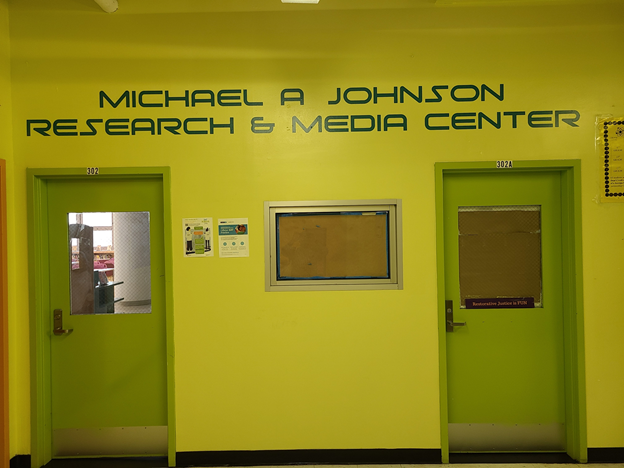The racially diverse, high-achieving schools of NYC’s past have vanished
By Susan Edelman/N.Y. Post
March 23, 2019
When Horace Davis attended Brooklyn Tech HS, he had no shortage of African-American classmates. Rather, black students far outnumbered whites.
At the time the Jamaican immigrant graduated, in 1984, the elite school that trains students in math, science and engineering had 4,531 students — including 2,239 black and 814 white. Black and Hispanic kids made up 63.5 percent of the student body.
Davis, now general manager of quality-assurance engineering at Con Edison, credits the “SP” or “Special Progress” classes at his middle school, IS 24 in East Flatbush.There, he was grouped with higher-performing kids who received more rigorous, accelerated course work. He and three classmates took the Specialized High School Admissions Test (SHSAT) and scored seats at Brooklyn Tech. “Back then, there wasn’t any test prep,” Davis told The Post.
Horace Davis, 1984 graduate of Brooklyn Tech and now general manager of quality-assurance engineering at Con Edison. “It was just a matter of having a good, solid education in the community. The expectations and the standards were high.”
From the mid-1970s to the mid-1990s, black and Hispanic kids made up close to half or more of the Brooklyn Tech student body. Stuyvesant and Bronx Science, the other original specialized schools, had many more black and brown kids than today, though not a majority.That historical success deserves a close look, Davis and other alumni contend, in light of this past week’s dismal news: Black and Latino kids received just 10.6 percent of the 4,798 seats offered at eight specialized schools for the 2019-20 school year. Whites got 28.5 percent, and Asian-Americans picked up the most — 51 percent.
What happened? Experts cite three major factors: The reduction and dearth of gifted or honors programs in black and Hispanic neighborhoods, the influx of Asian immigrants, and the test-prep craze.
Experts and politicians largely blame the lopsided racial results on the Department of Education’s failure to provide enough early, advanced programs to nurture bright minorities.
In a letter last week to schools Chancellor Richard Carranza, Councilmember Robert Cornegy Jr., who is black, noted: “As recently as 1989, Brooklyn Tech was 51 percent black and Latino. As enhanced academics for high-potential students in those communities was eliminated, the percentages of students of color decreased to the point we are at today.”
Eighteen fellow council members signed the letter, which did not mention the SHSAT. In response, a Carranza spokesman simply repeated his statement: “We need to eliminate the single test for specialized high-school admissions now.”
The biggest specialized school, with 1,825 freshman seats, Brooklyn Tech last week offered the largest share to black students (5.2 percent) and Hispanic students (6.4 percent). But that is way down from decades ago.
When Denice Ware earned her Tech diploma in 1983, the school had 4,531 students — including 2,239 blacks and 814 whites. Ware, a retired Verizon human-resources director and operations manager, was one of six black middle-school classmates who made the cut. “I was proud to ride the A train with other kids from my neighborhood to Brooklyn Tech,” she recalled.
She said her preparation started in “IGC” (Intellectually Gifted Children) classes at her Ocean Hill Brownsville elementary school, and continued in SP classes at IS 271, which has since closed for poor performance. “I was a product of the talented and gifted programs that most of the junior highs offered,” she said. “We had a very robust curriculum.” But those programs, in nearly every city school in the ’70s and ’80s, have all but vanished.
By the early ’90s, an “anti-tracking movement” led to the gradual elimination of such programs, said Syed Ali, a sociology professor at Long Island University in Brooklyn who has studied the specialized schools. Critics argued kids of all abilities — and races — should learn together.
“The big problem was that honors programs in every school began to disappear,” Ali said.
In 2001, when mayoral control of city schools began under Mike Bloomberg, he instituted a standardized test to admit high-IQ kids into separate G&T programs.
He also spurred the creation of “screened” schools, which siphoned off high-performing students — often more white and Asian than black or Hispanic. But between 2009 and 2013, the DOE, citing low enrollment, dropped 60 G&T programs mostly in poor, minority neighborhoods in Brooklyn, Queens and the Bronx, the New York Times reported. Today, 10 city districts with more than 90 percent black or Hispanic enrollment have only one G&T program, records show.
Meanwhile, the ’80s brought an influx of Asian immigrants to New York, with a growing number of their kids striving to get into the specialized schools. And the test-prep business sprung up. Asian students received most offers to city’s elite high schools
“It created an arms race — more and earlier to outgun the kid sitting next to you,” said David Bloomfield, a Brooklyn College and CUNY Grad Center education professor.
“Among Asian-Americans, there’s a culture of test-prep which doesn’t exist as much in the other groups,” said Clara Hemphill, editor of the education site Insideschools.org.
The extra tutoring can cost thousands of dollars, which many low-income minorities can’t afford. Still, Hemphill said, “Even parents of modest means will spend a lot of money on it.”
